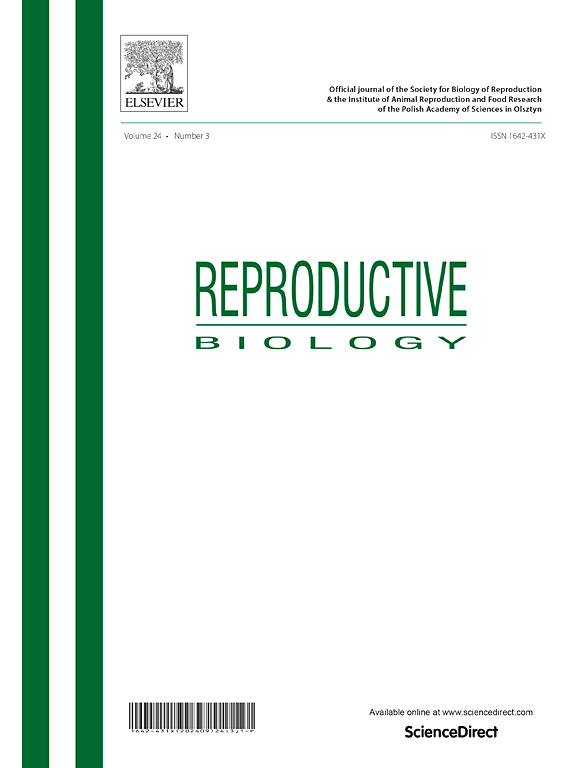The impact of bisphenol A and its analogs on female reproductive health
IF 2.5
3区 生物学
Q3 REPRODUCTIVE BIOLOGY
引用次数: 0
Abstract
The number of pollutants stemming from anthropogenic chemicals is increasing every year. Some of them act similarly to hormones and are referred to as endocrine-disrupting chemicals or endocrine disruptors. In this group, bisphenol A (BPA) is well characterized as a xenoestrogen and is known to affect human health. BPA is crucial to the production of plastic, a material that has revolutionized and facilitated daily life. Nevertheless, the use of BPA is currently being limited, and consequently, new BPA analogs are under development. However, both BPA and its analogs can be released into the environment during their manufacturing process and daily usage. In conjunction with the escalating demand for plastics and the prolonged persistence of plastic waste, it poses a substantial threat to human health. In this article, we concentrate on the influence of BPA and its most common analogs (bisphenol S, bisphenol F, bisphenol AF, bisphenol Z, bisphenol P, bisphenol AP, bisphenol B) on female reproductive health. We reviewed the existing epidemiological data (or in the absence of it, data obtained from animal and in vitro models) on their impact on hormone levels, oocyte yield, oocyte and embryo quality, implantation and pregnancy success, polycystic ovary syndrome, and endometriosis. We also discuss metabolism of bisphenols, their mechanism of action and impact on cellular physiology, as well as current regulations on their use. Our comprehensive review reveals that, despite existing discrepancies, a substantial body of evidence suggests that bisphenols influence female reproductive health. This underscores the urgent need for future regulatory measures to limit and regulate the use of bisphenols.
双酚A及其类似物对女性生殖健康的影响
由人为化学物质产生的污染物的数量每年都在增加。它们中的一些作用类似于激素,被称为内分泌干扰化学物质或内分泌干扰物。在这一组中,双酚A (BPA)被认为是一种雌激素,已知会影响人体健康。双酚a对塑料的生产至关重要,塑料是一种彻底改变和促进日常生活的材料。然而,双酚a的使用目前是有限的,因此,新的双酚a类似物正在开发中。然而,双酚a及其类似物在制造过程和日常使用中都会释放到环境中。再加上对塑料的需求不断增加和塑料废物长期存在,它对人类健康构成了重大威胁。在本文中,我们主要关注双酚a及其最常见的类似物(双酚S、双酚F、双酚AF、双酚Z、双酚P、双酚AP、双酚B)对女性生殖健康的影响。我们回顾了现有的流行病学数据(或在没有流行病学数据的情况下,从动物和体外模型获得的数据),研究它们对激素水平、卵母细胞产量、卵母细胞和胚胎质量、着床和妊娠成功率、多囊卵巢综合征和子宫内膜异位症的影响。我们还讨论了双酚类物质的代谢、作用机制和对细胞生理的影响,以及目前对其使用的规定。我们的综合审查显示,尽管存在差异,但大量证据表明双酚类物质影响女性生殖健康。这强调了今后迫切需要采取管制措施来限制和管制双酚类物质的使用。
本文章由计算机程序翻译,如有差异,请以英文原文为准。
求助全文
约1分钟内获得全文
求助全文
来源期刊

Reproductive biology
生物-生殖生物学
CiteScore
3.90
自引率
0.00%
发文量
95
审稿时长
29 days
期刊介绍:
An official journal of the Society for Biology of Reproduction and the Institute of Animal Reproduction and Food Research of Polish Academy of Sciences in Olsztyn, Poland.
Reproductive Biology is an international, peer-reviewed journal covering all aspects of reproduction in vertebrates. The journal invites original research papers, short communications, review articles and commentaries dealing with reproductive physiology, endocrinology, immunology, molecular and cellular biology, receptor studies, animal breeding as well as andrology, embryology, infertility, assisted reproduction and contraception. Papers from both basic and clinical research will be considered.
 求助内容:
求助内容: 应助结果提醒方式:
应助结果提醒方式:


